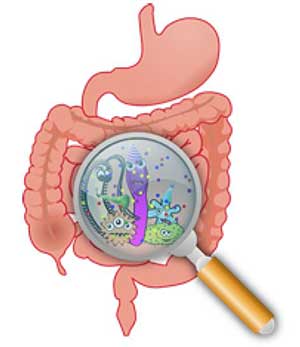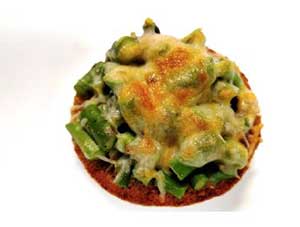Could the Bacteria in your Belly Keep you Healthy?
Sheila Gains, Family & Consumer Science Extension Agent, Arapahoe County

Yes, when we are born our belly/gut begins to grow the bacteria that we will need to stay healthy. This bacteria is often transferred to infants who are delivered with a vaginal birth or during breastfeeding. If this is not possible it might take a little longer, but young children build a healthy
amount of good gut bacteria.
Having a healthy amount and type of gut bacteria is important in helping us stay healthy throughout our lives. These bacteria helps us digest food, absorb fluids and nutrients, strengthen our immune system and control our appetite. They even protect us from more harmful bacteria. The majority of the bacteria we have in our bodies live in our gut, and most of these live in our large colon. We need a variety of bacteria in our gut to help us function at our best. If we don?t have a healthy balance of gut bacteria the chances of us experiencing diarrhea, stomach
aches and cramping increase.
Eating foods that are high in dietary fiber like fruits and vegetables, helps establish and maintain good gut bacteria. Reducing stress also helps your gut stay healthy. Have you ever noticed when you are upset that you have a stomach ache or diarrhea?
People living in Colorado are searching online for information on gut bacteria more than people in most other states.
Prebiotics are foods that help good bacteria grow in your gut:
Examples of foods that are high in prebiotics include asparagus, chicory root, garlic, onions, sweet potato, whole wheat, bananas, berries, oatmeal, dry beans and leeks. You can restore the amount and variety of gut bacteria you have by eating foods with lots of fiber that feed healthy gut
bacteria.
Probiotics are live beneficial gut bacteria:
Probiotics can be found in foods such as fermented sauerkraut or fermented pickles, kimchi, yogurt (with live and active cultures), kefir, and kombucha (fermented tea). Aged cheeses, miso and tempeh (fermented soy beans) are also good sources of probiotics. Probiotics can also be found in many specialty foods and supplements.
As well as eating foods that contain probiotics some people may be advised to take a probiotic supplement. Medications like antibiotics can disrupt the bacteria balance in your gut.
If you are tempted to take or give a probiotic supplement yourself or to children, make sure to talk to your healthcare provider first.
Let’s Talk
Ask children “Did you know there are about 10 trillion microbes living in your belly?” Explain to them that most of the bacteria in their belly is helping their body stay healthy. They can help feed the good bacteria by eating foods that the bacteria like. Belly bacteria like all kinds of fruits and vegetables, oatmeal, yogurt and beans, just to name a few. Ask children to help you plan a meal or snack that includes at least one food that belly bacteria like.
Examples: Baked whole wheat pita chips and bean dip; Yogurt and fresh berries; Oatmeal and sliced bananas; Carrot sticks and dip made with plain yogurt and herbs or spice mix.
Recipes for Health:
Asparagus Mushroom Melts
Ingredients:

- 4 English Muffins or eight slices of bread (whole wheat)
- ¼ cup onion, finely minced
- 1 cup mushrooms, chopped
- 1 ½ teaspoons oil
- 1 pound fresh asparagus, tough end removed and sliced crosswise into ½ rounds
- ½ teaspoon vinegar
- Dash of salt & pepper
- ¾ cup shredded cheese (3 oz.)
Directions:
- Have children help wash and snap off the thick ends of asparagus. Adults should cut into ½ inch rounds.
- Children can arrange cut muffin halves or bread in a single layer, cut sides up, on a baking sheet. Adults lightly toast/brown muffin halves in oven set on broil. Watch closely!
- Adult uses a large skillet over medium-high heat to sauté onions and mushrooms in oil. Stir often until just beginning to brown.
- Add asparagus, seasoning and vinegar. Sauté, stirring often, until asparagus is barely tender. Season lightly with salt and pepper.
- Children can help divide vegetable mixture equally onto the muffin halves and top each muffin with shredded cheese.
- Adults broil until the cheese melts. Watch carefully to avoid burning!
Refrigerate leftovers within 2 hours.





